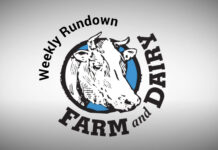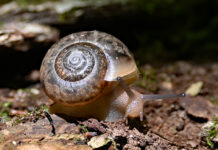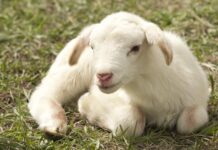Drought conditions can significantly impact forage production, creating challenges for livestock producers as we prepare for winter. Proper planning is crucial to ensure animals receive adequate nutrition during the colder months.
Here are some strategies Ohio producers can consider when dealing with drought-affected pastures and forage shortages.
Assess forage inventory
Begin by taking a detailed inventory of your available forage including hay, silage and standing pasture. Compare the amount of feed on hand to the livestock’s needs based on animal weight, stage of production and weather conditions.
Supplement with alternative feeds
In times of drought, forage quantity may not meet the nutritional needs of your herd. Consider supplementing with alternative feeds such as corn, distillers grains or soybean hulls. Livestock nutrition specialists recommend balancing energy, protein and fiber in the diet, and alternative feeds can help fill gaps in forage quality and availability.
Grazing management and stockpiled forage
If possible, stockpile cool-season grasses like tall fescue or orchard grass for late fall and early winter grazing. These grasses maintain better nutritional quality as temperatures drop. Properly managed grazing can extend the grazing season, reducing reliance on stored feeds. You may also consider rotational grazing to maximize forage use and improve pasture recovery post-drought.
Purchasing and storing hay
Ohio’s hay market may be tight following a drought, so early procurement is key. Work with local hay suppliers or utilize the Ohio Department of Agriculture’s Hay Directory online at tinyurl.com/384y8j7c to locate those producers who have hay for sale. When purchasing, be mindful of forage quality and storage methods to minimize spoilage and wastage during winter months. Properly stored hay can last through winter without significant losses in nutrition.
Test forage quality
Forage harvested during drought conditions may have lower nutritional value. Testing hay and silage for nutrient content ensures you know exactly what you’re feeding. OSU Extension offices offer forage testing services, which can provide recommendations for necessary supplementation. Matching the quality of forage to different classes of livestock (e.g., dry cows vs. lactating cows) can also optimize feed resources.
Plan for water needs
Don’t overlook water. Drought can deplete water sources or reduce water quality. Ensuring access to clean, unfrozen water is essential for maintaining livestock health and performance throughout winter. The U.S. Department of Agriculture Natural Resources Conservation Service in Ohio assists in evaluating and improving farm water systems.
Monitor livestock condition
Regularly assess the body condition score (BCS) of your herd throughout the winter. Adjust feed rations as needed to maintain target body conditions, ensuring that animals are neither losing too much weight nor becoming over-conditioned. Nutritional management should aim for steady weight maintenance, especially for pregnant cows, to ensure healthy calving and productivity in the spring.
Utilize Extension resources
Ohio State University Extension offers numerous resources, including workshops, consultations and publications to assist producers in developing winter-feeding strategies. Producers are encouraged to reach out to their county extension office for specific advice tailored to their operations.
Ohio livestock producers can navigate drought-induced challenges and ensure their herds are adequately fed throughout the winter. Early planning is key to minimizing stress on both livestock and producers.













